On Thursday 16th May, KS1 Science Club were making air rockets. We had the think about the force needed to make our air rockets fly the furthest distance possible.
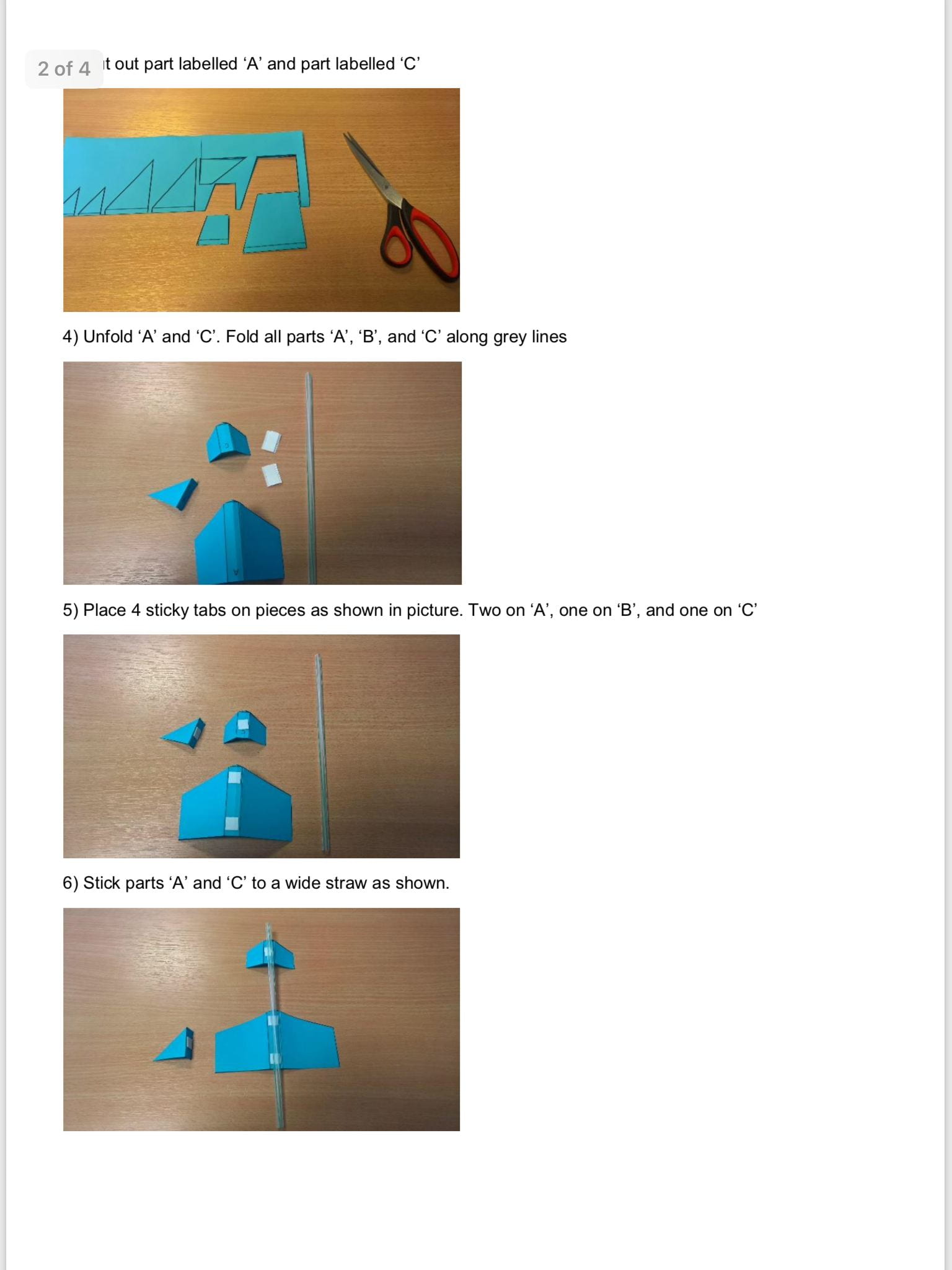


Air Rockets
Balloon Powered Cars
This week in our KS1 Science Club we were making Balloon Powered Cars. We discussed how we could make our cars go quicker and further by blowing our balloons up as much as possible as the air will push the car forward. Well done to our Engineer of the week Zoe-Mae who showed brilliant teamwork skills helping other children to build their cars. 





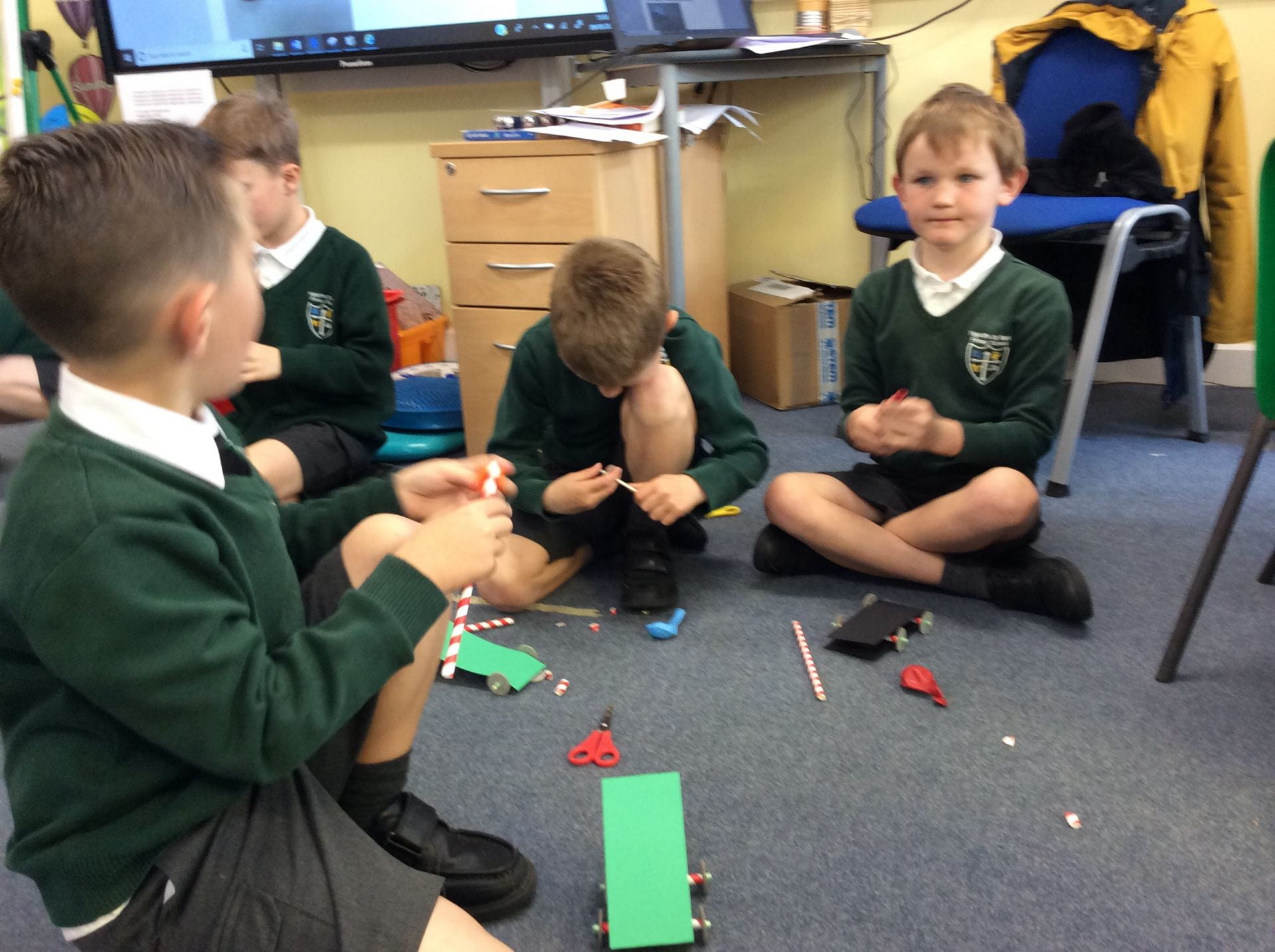






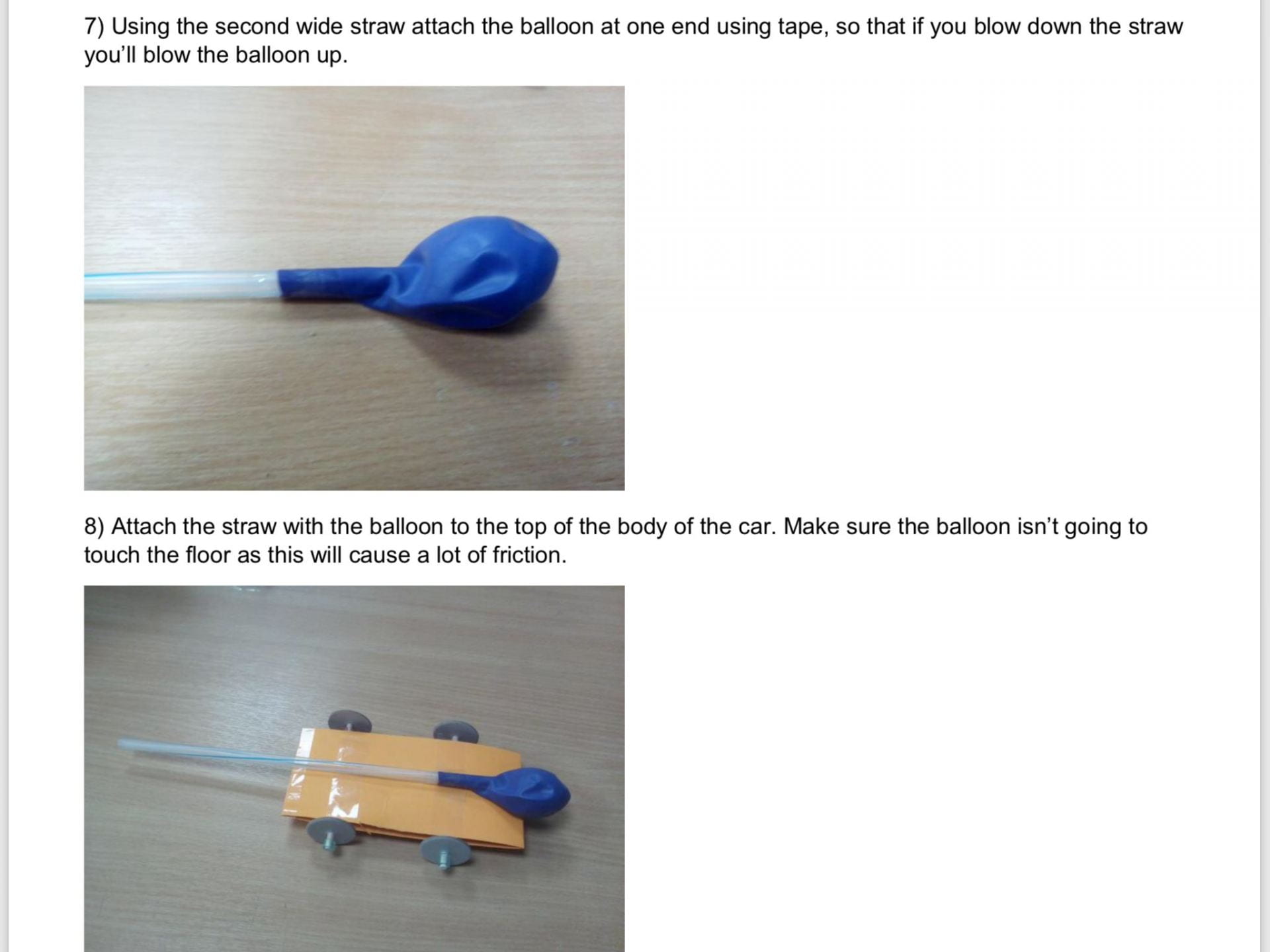

Crazy Catapults
In the first week of the KS1 Science Club we were building catapults. We focussed on how force is converted into energy and to make our catapults fling the counters further we needed more energy. Well done to our Engineer of the Week Elliot for making his counter fly the furthest distance across the classroom. 
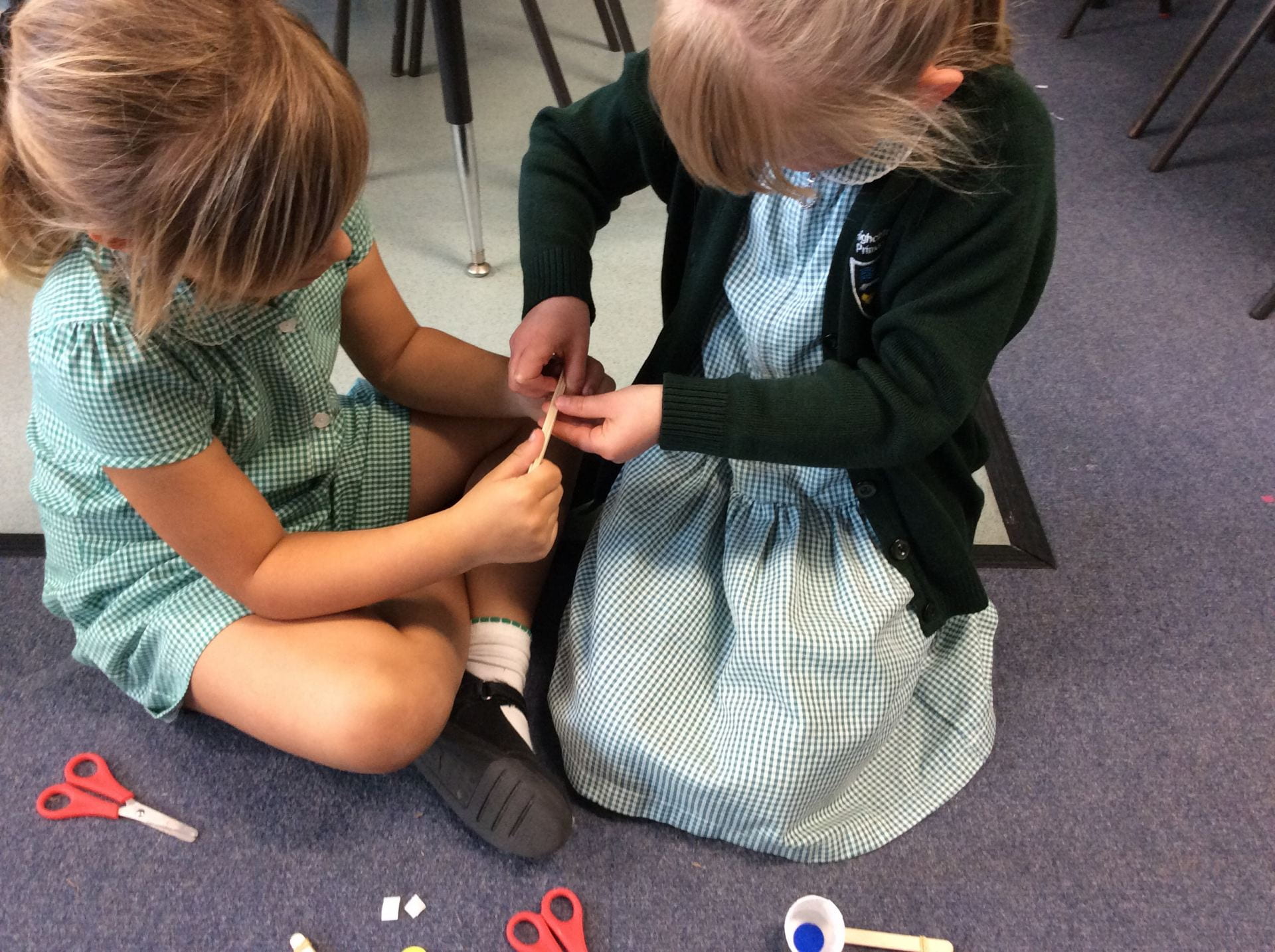





KS2 Science club
For our first week we focused on forces. We learnt about Newton’s theory that for every action there is an equal and opposite reaction. This helped us to understand what made our balloon powered cars travel in the opposite direction to where the air escaped from the straw. 

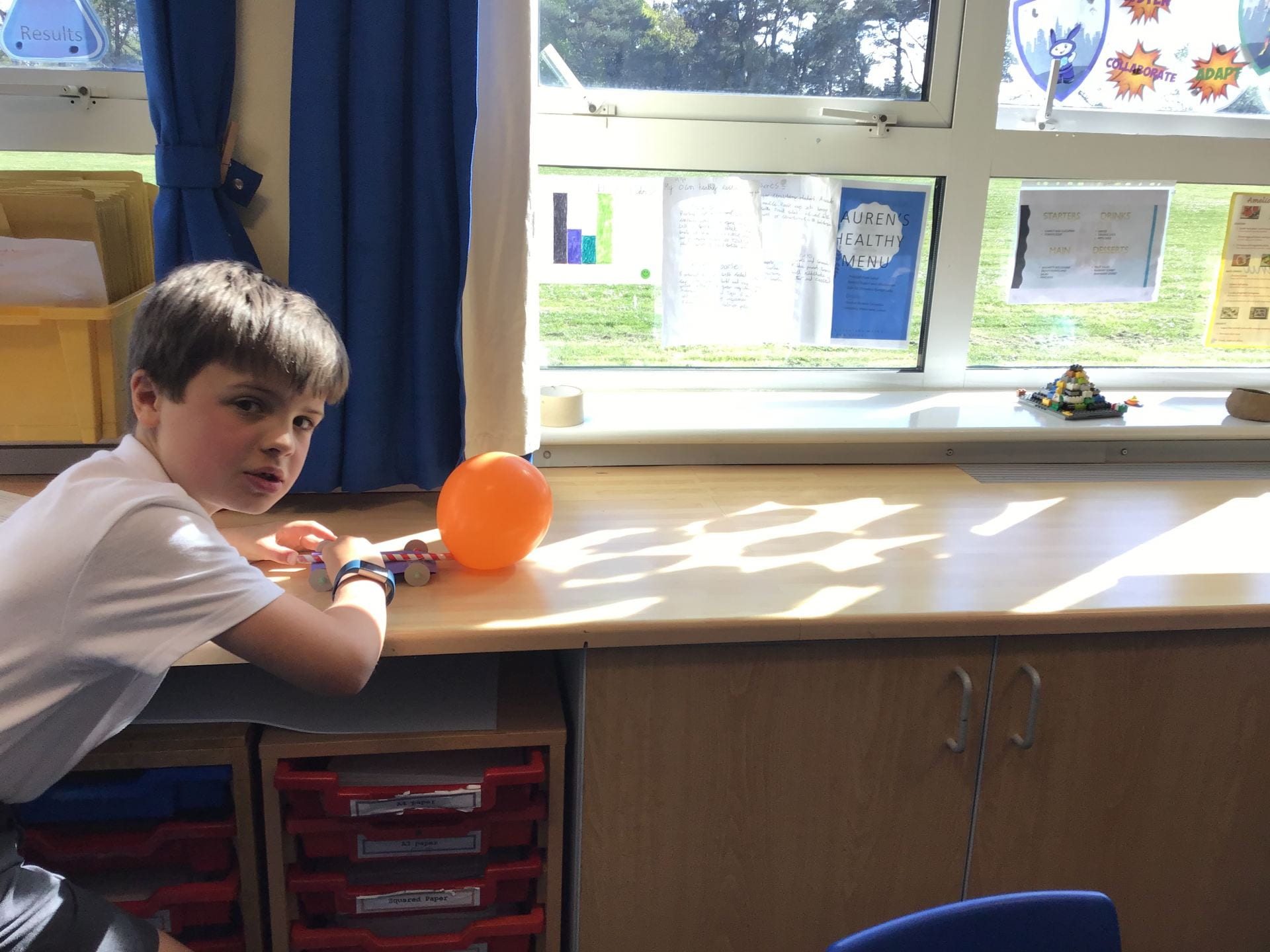



A to Z Science Experiments
This weeks challenge is all about the density of different liquids (basically how heavy different liquids are). Cooking oil for example, is much lighter than tap water, and washing up liquid is much heavier than water. This means that if you are very careful you could put these 3 liquids in a glass or bottle but they would stay in 3 separate layers. Send in your photos and the most interesting project will win a prize! https://highcliffescience.edublogs.org


Year 6 heart dissection!!!
If you don’t like looking at gory things, don’t look at the pictures. On the 28th of March, we (year 6 avocets) dissected a sheep’s heart. First we put latex gloves on our hands so we didn’t get covered in blood. Then we were given the heart and were asked to guess where the arteries and veins were. We found out that the arteries, the thicker ones, were visible on the outside of the heart and so were some of the veins. Next we put red (oxygenated) and blue(deoxygenated) lollipop sticks in the heart where we thought the blood ran through.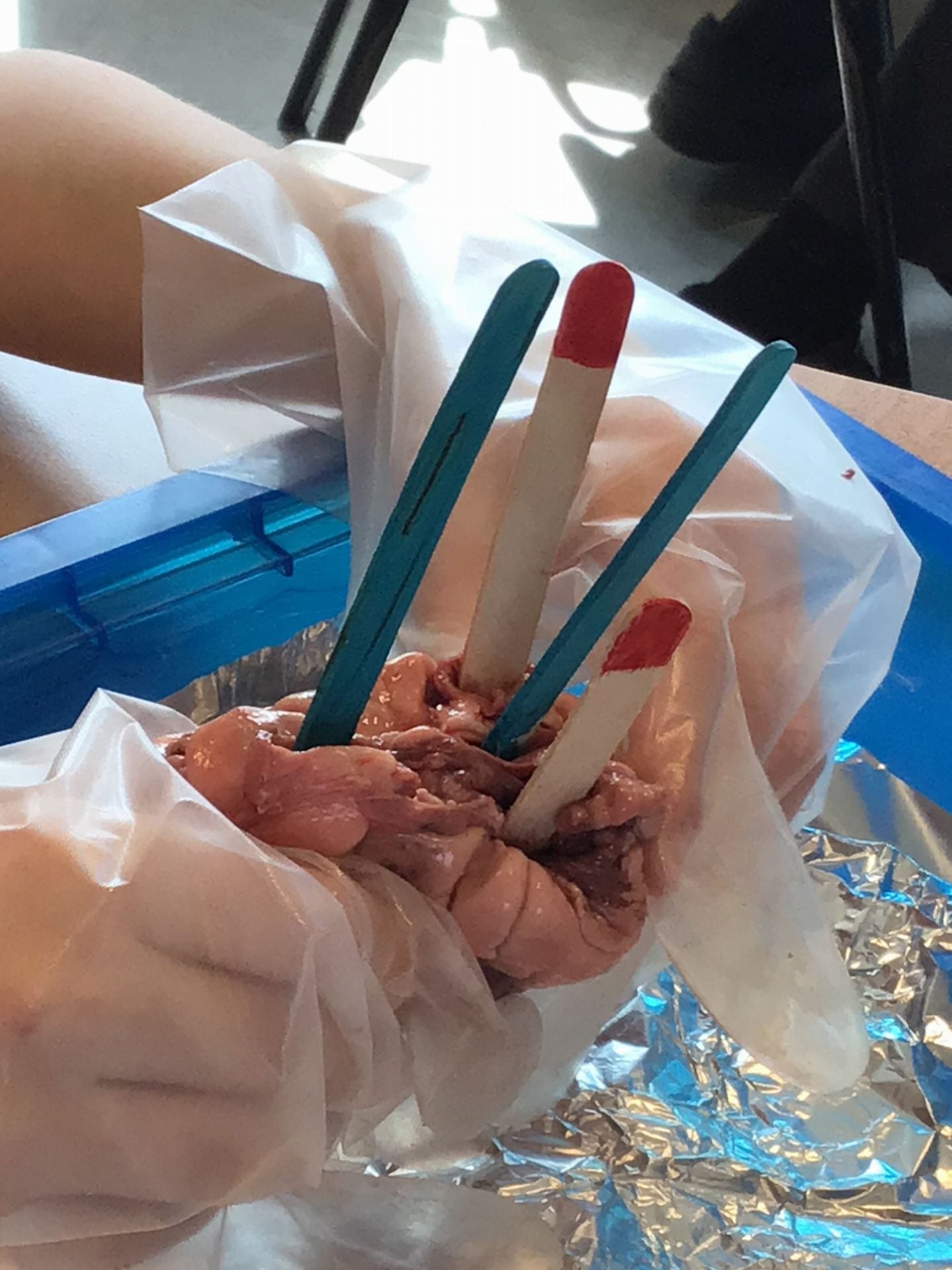
After, we were told to look at the board because our teacher (Mrs Rand) was going to show us how to cut the heart so we could see the chambers. We cut about a centimetre from the pulmernary artery and it was tough but eventually we managed to cut to the right ventricle. Inside we saw a valve. It looked like a skin coloured balloon that had been stretched out.
 After we examined the right ventricle, we cut just right of the polmernery artery to find the left atrium. It was the same as the right ventricle except smaller and a bit harder to get into. Then we turned the heart inside out to get a better view. There we could see the valves and veins more clearly. Even though it smelt horrible, it was one of the best lessons I ever had. I didn’t even know that people used to eat them.
After we examined the right ventricle, we cut just right of the polmernery artery to find the left atrium. It was the same as the right ventricle except smaller and a bit harder to get into. Then we turned the heart inside out to get a better view. There we could see the valves and veins more clearly. Even though it smelt horrible, it was one of the best lessons I ever had. I didn’t even know that people used to eat them.
¡¡¡By Kai C, Fran C and Logan P!!!
Electric continents
Year 4 have been using the Science and Geography skills to create interactive maps of the continents. We have learnt how to make switches that can be used to make a multiple choice quiz where the correct answer will light up on the map. The finished articles should be ready next week. 






Well done Summer!
Summer was the first person to solve the puzzle that was set last week. This is what was happening. At first, the flame heats the air inside the container and this hot air expands quickly. Some of the expanding air escapes from under the vase where you might have seen some bubbles. When the flame fades and goes out, the air in the container cools and cooler air contracts or takes up less space. That contraction creates a weak vacuum – or lower pressure – in the container. Where’s the higher pressure? Right! It’s outside the container pressing down on the water in the dish. The outside air pushes water into the container until the pressure is equalised inside and outside the container. The water stops rising when that pressure equalisation is reached.

A to Z Science Experiments
C – Candle Magic
This week you have a challenge with no instructions. Using a plate or dish, a candle, some coloured water and a glass, your challenge is to get some of the coloured water from the dish into the glass without moving the dish or disturbing the water. If you solve the puzzle why not explain what happened in the comments below then you can come to Mr. Lee’s classroom and claim a prize. I will keep the comments hidden until 22nd March so that nobody peeks at the answer, good luck!


Mad Science Visits Year 3
Year 3 had a visit from the Mad Science company. To tie in with their topic they took part in a workshop all about rocks. They learnt about the rock cycle, made an underwater volcano and looked at crystals under an ultra violet light. The children all loved it and learnt a lot from the workshop.





